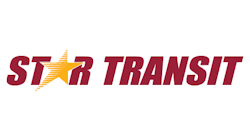Star Transit Board of Directors Approve Fare Restructure, Changes Take Effect November 1, 2017
During the August 15th's scheduled board meeting, the Star Transit Board of Directors approved the proposed fare restructure. This includes a discount for disabled riders and a free fare for qualified elderly and/or disabled riders on the agency’s four fixed routes.
Executive Director, Omega Hawkins said, “Star Transit hasn’t had a fare policy change in 20 years. It’s time we have a pricing system where riders going similar distances pay a similar fare and provides fare equity across all of the areas we serve”.
Fare revenues help fund STAR Transit’s operating budget, which provides for the everyday expenses of running the system, such as labor and fuel.
The fare changes go into effect on November 1, 2017 and is meant to help simplify the fare structure for customers and employees.
Below is a summary of the On-Demand fare restructure which is based on distance banding. Distance banding calculates the trip fare based on direct travel distance from origin to destination and is trip based. It does not include intercept pickups or drop-offs and measures distance based on fastest, most efficient street routing.
|
Based on Shortest Distance |
Age 60+ |
General Population |
|
Any trip 5 miles or less |
$1.00 |
$2.00 |
|
More than 5 miles/less than 10 |
$2.00 |
$4.00 |
|
More than 10 miles/less than 15 |
$3.00 |
$6.00 |
|
More than 15 miles/less than 20 |
$4.00 |
$8.00 |
|
More than 20 miles/less than 25 |
$5.00 |
$10.00 |
|
More than 25 miles |
$6.00 |
$12.00 |
The Board voted to keep the $1.00 fare for the Bach Springs Midtown Express, Seagoville Express and the Hutchins Shuttle. However, they did vote to raise the fare for the Kaufman Trolley from 25 cents to $1.00. The Board also voted to offer a free fare for qualified elderly and/or disabled riders on all fixed routes. Star Transit will utilize the certification criteria as established in Policy #62, Americans with Disabilities Act (ADA) Transportation Policy and Procedure.
The Board's vote follows a public meeting process that included four meetings. Customers, residents, stakeholders and other members of the public were encouraged to attend, ask questions and submit comments.


